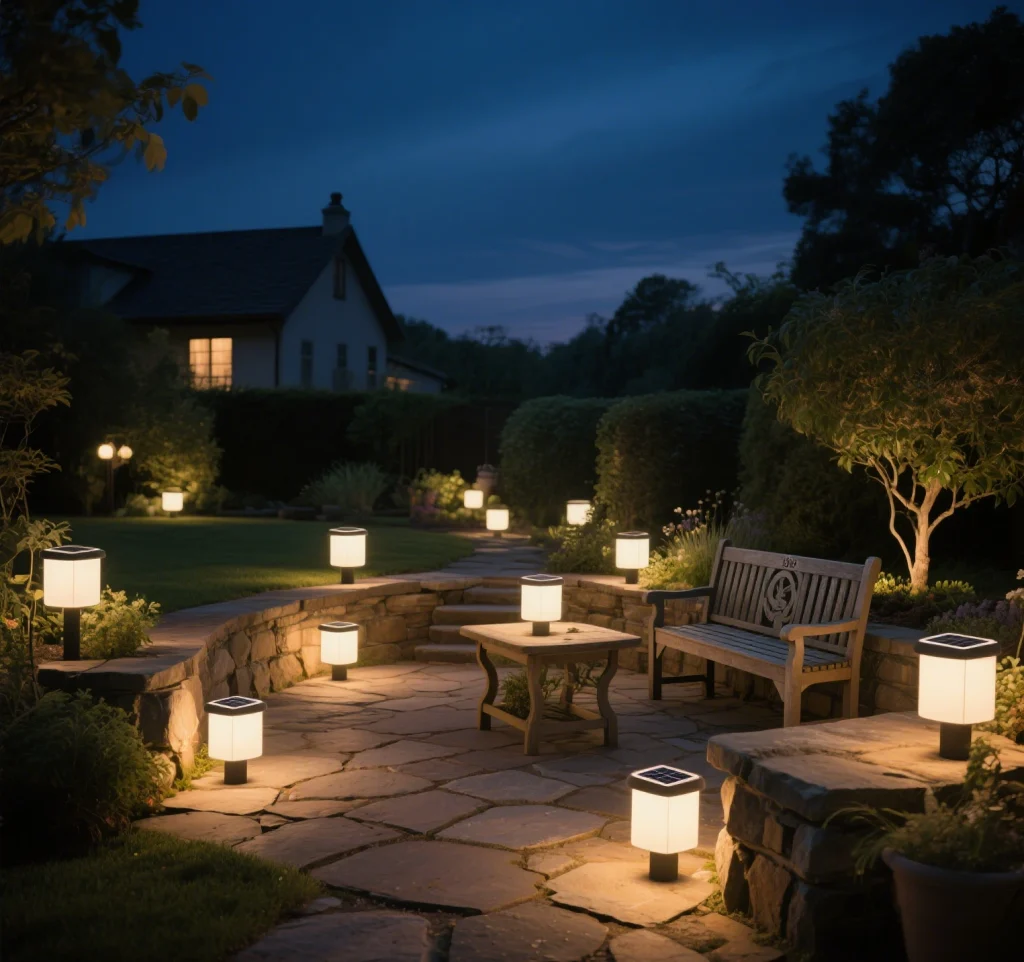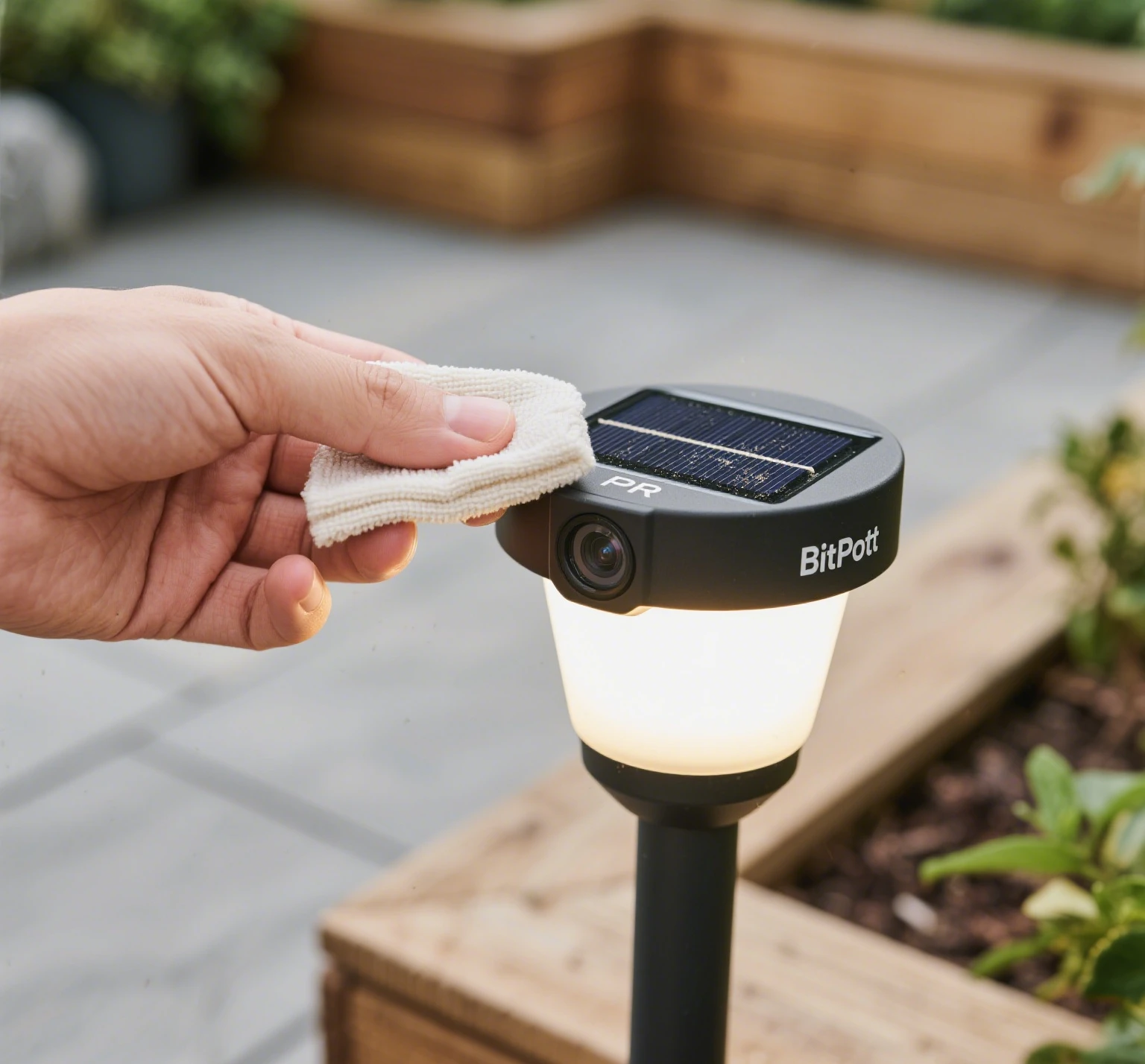Solar lamps have become a popular choice for eco-conscious consumers, promising energy savings and sustainable lighting. Advertisements often highlight impressive figures like “23% efficiency” or “72-hour runtime,” but what do these numbers really mean? In this article, we’ll break down the technical claims behind solar lamps, explore their real-world performance, and help you make informed decisions without being swayed by marketing buzzwords.

Understanding Solar Panel Efficiency
Solar panel efficiency refers to the percentage of sunlight a panel converts into usable electricity. A claim of “23% efficiency” sounds impressive, but let’s unpack it. Most solar lamps use monocrystalline or polycrystalline silicon panels, with efficiencies ranging from 15% to 23%. High-end models may incorporate advanced technologies like PERC (Passivated Emitter and Rear Cell) to achieve efficiencies closer to 23%. However, this figure is measured under Standard Test Conditions (STC)—ideal lab settings with 1000 W/m² sunlight intensity, 25°C temperature, and no shading.
In real-world scenarios, factors like cloud cover, panel orientation, and temperature reduce efficiency. For example, a 23% efficient panel in cloudy conditions might produce only 50-70% of its rated output. When evaluating solar lamps, check the panel’s wattage and surface area. A small 10W panel with 23% efficiency generates less power than a larger 20W panel with 18% efficiency, despite the lower percentage. Focus on the actual power output (measured in watt-hours) rather than efficiency alone.
Battery Capacity and Runtime Claims
The promise of “72-hour runtime” is another common marketing hook. This claim typically refers to the duration a solar lamp can operate on a fully charged battery under minimal settings, such as low brightness or intermittent use. To understand this, let’s examine the battery technology in solar lamps.
Most solar lamps use lithium-ion or lithium iron phosphate (LiFePO4) batteries, which offer high energy density and longevity. A typical 10W solar lamp might have a 3.7V, 4000mAh battery, storing about 14.8Wh of energy. If the lamp consumes 0.2W per hour on its lowest setting, it could theoretically run for 74 hours. However, real-world factors like battery degradation, temperature extremes, and higher brightness settings shorten this duration.
For instance, a lamp on high brightness (e.g., 2W) might only last 7-8 hours. Additionally, battery efficiency drops over time—after 500 charge cycles, a lithium-ion battery may retain only 80% of its original capacity. When assessing runtime claims, check the battery’s watt-hour rating and consider your usage patterns. If you need consistent high-brightness lighting, prioritize lamps with larger batteries or supplemental charging options.
The Role of Charge Controllers
A critical but often overlooked component in solar lamps is the charge controller. This device regulates the flow of electricity from the solar panel to the battery, preventing overcharging or deep discharging. Advanced charge controllers, like MPPT (Maximum Power Point Tracking), optimize energy harvest by adjusting to varying sunlight conditions, potentially boosting output by 10-30% compared to basic PWM (Pulse Width Modulation) controllers.
When a solar lamp boasts high efficiency or extended runtime, the charge controller plays a significant role. MPPT controllers are more common in premium models, while budget lamps often use PWM, which is less efficient. To evaluate a lamp, check if it specifies the controller type. A high-efficiency panel paired with a poor controller can underperform, so don’t be swayed by panel specs alone.
Light Output and Lumens
Brightness is a key selling point for solar lamps, often measured in lumens. A claim of “1000 lumens” suggests a bright light, but context matters. Lumens measure total light output, but the perceived brightness depends on the lamp’s beam angle and light distribution. A narrow beam might seem brighter but cover less area, while a diffused light provides broader coverage at lower intensity.
Additionally, some manufacturers inflate lumen ratings by measuring output at the LED source, not accounting for losses from lenses or reflectors. In practice, a 1000-lumen lamp might deliver only 800-900 lumens to the environment. When comparing lamps, look for third-party certifications or real-world lumen measurements. Also, consider the color temperature (measured in Kelvin). Warmer lights (2700-3000K) are cozy but less bright, while cooler lights (5000-6000K) appear brighter and are better for task lighting.
Weather Resistance and Durability
Solar lamps are often marketed as “weatherproof” or “IP65-rated,” but these claims require scrutiny. The IP rating (Ingress Protection) indicates resistance to dust and water. An IP65 rating means the lamp is dust-tight and can withstand low-pressure water jets, suitable for outdoor use. However, extreme conditions like heavy rain or prolonged submersion can still cause damage if the lamp’s seals degrade over time.
Durability also depends on the materials used. High-quality solar lamps use tempered glass for panels and corrosion-resistant aluminum or ABS plastic for housings. Budget models may use cheaper plastics that crack or fade under UV exposure. Check customer reviews on platforms like Amazon or REI for insights into long-term performance. A lamp’s lifespan is often tied to its build quality, so prioritize models with robust construction and at least a 2-year warranty.
Environmental Impact and Sustainability
Solar lamps are marketed as eco-friendly, but their sustainability depends on production and disposal practices. Manufacturing solar panels and batteries involves energy-intensive processes and materials like silicon, lithium, and cobalt. Responsible brands use recyclable materials and offer take-back programs for end-of-life disposal. When choosing a lamp, look for certifications like RoHS (Restriction of Hazardous Substances) or Energy Star, which indicate environmental compliance.
Additionally, consider the lamp’s energy savings. A solar lamp with a 10W panel and 1000-lumen output can replace a 60W incandescent bulb, saving approximately 50Wh per hour of use. Over a year, this translates to significant energy savings, especially in off-grid applications. However, the true environmental benefit depends on how often the lamp replaces grid-powered lighting.

Innovations in Solar Lamp Technology
Recent advancements have made solar lamps more efficient and versatile. For example, some models now integrate motion sensors to conserve battery life by activating only when needed. Others offer smart features, like app-controlled brightness or scheduling, though these require stable Bluetooth or Wi-Fi connections, which may not suit remote areas.
Another innovation is the use of bifacial solar panels, which capture sunlight on both sides, increasing energy harvest by 5-20%. While still rare in consumer lamps, this technology is gaining traction in premium models. Additionally, hybrid lamps with USB or grid-charging options provide backup power for cloudy days, enhancing reliability.
How to Choose the Right Solar Lamp
With so many claims and specifications, selecting a solar lamp can feel overwhelming. Here’s a checklist to guide your decision:
- Define Your Needs: Determine the lamp’s purpose—decorative garden lighting, security lighting, or off-grid illumination. This affects the required lumens, battery size, and panel wattage.
- Verify Specifications: Look beyond marketing claims like “23% efficiency” or “72-hour runtime.” Check the panel’s wattage, battery capacity (in Wh), and lumen output.
- Check Build Quality: Ensure the lamp has a high IP rating (e.g., IP65) and durable materials like tempered glass or aluminum.
- Read Reviews: Platforms like CNET or Wirecutter offer unbiased reviews and performance tests.
- Consider Sustainability: Choose brands with eco-friendly certifications and recycling programs.
- Evaluate Features: Decide if you need extras like motion sensors, smart controls, or hybrid charging.
Common Myths About Solar Lamps
Myth 1: Higher Efficiency Means Better Performance
A 23% efficient panel isn’t always superior to an 18% efficient one. Total power output (wattage) and system design (e.g., charge controller quality) matter more.
Myth 2: Runtime Claims Are Always Accurate
A “72-hour runtime” assumes minimal settings and ideal conditions. Real-world usage, especially at high brightness, significantly reduces runtime.
Myth 3: All Solar Lamps Are Equally Durable
IP ratings and material quality vary widely. A cheap lamp may fail after a single rainy season, while a premium model lasts years.
Conclusion
Solar lamps offer a sustainable and versatile lighting solution, but marketing claims like “23% efficiency” or “72-hour runtime” can be misleading without context. By understanding key components—solar panels, batteries, charge controllers, and lumens—you can evaluate a lamp’s true performance. Prioritize specifications like wattage, battery capacity, and build quality over flashy percentages. Check reviews on trusted sites like Consumer Reports or TechRadar, and choose a lamp that aligns with your needs and environmental values. With the right knowledge, you can harness the power of solar lighting without falling for marketing hype.


Leave a Reply